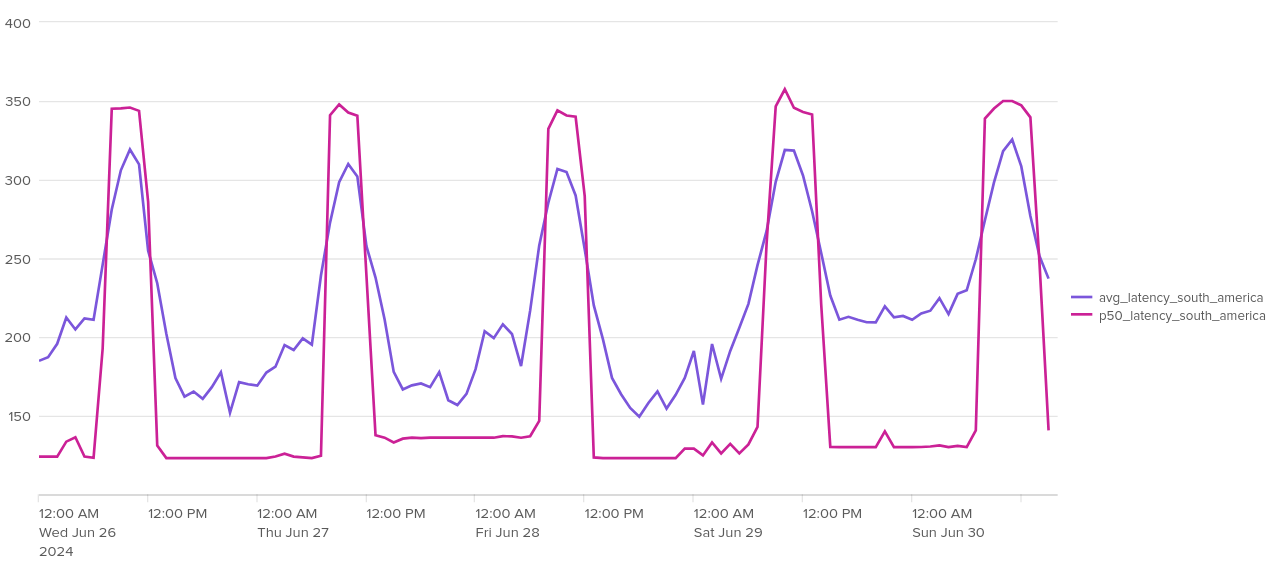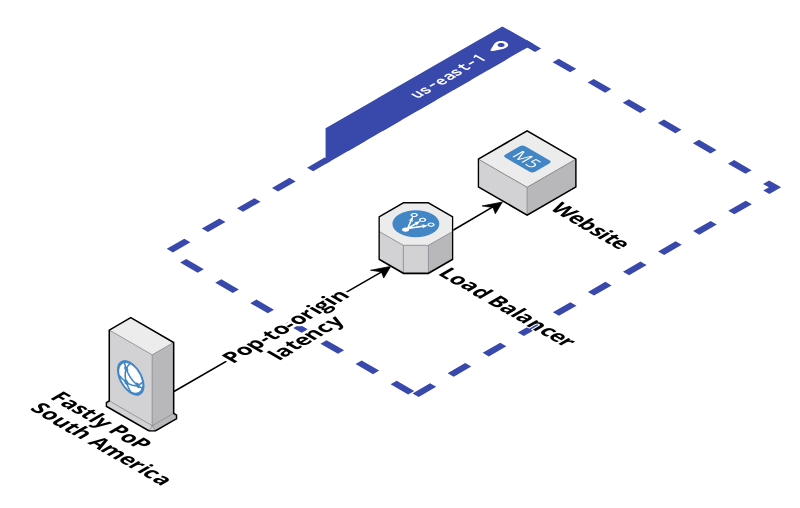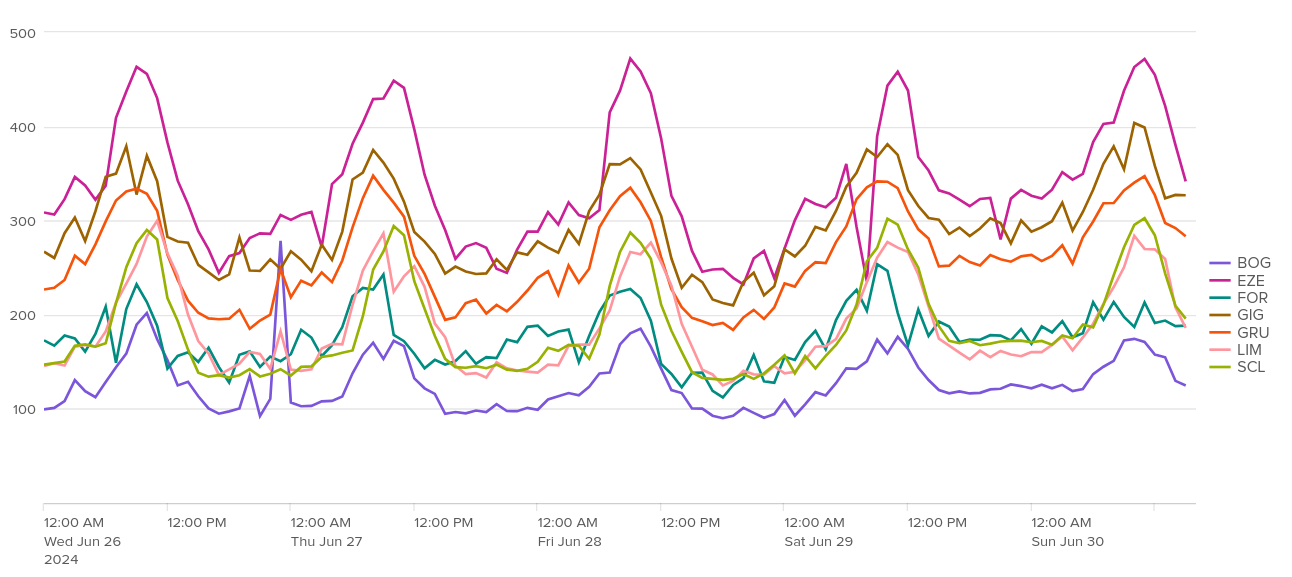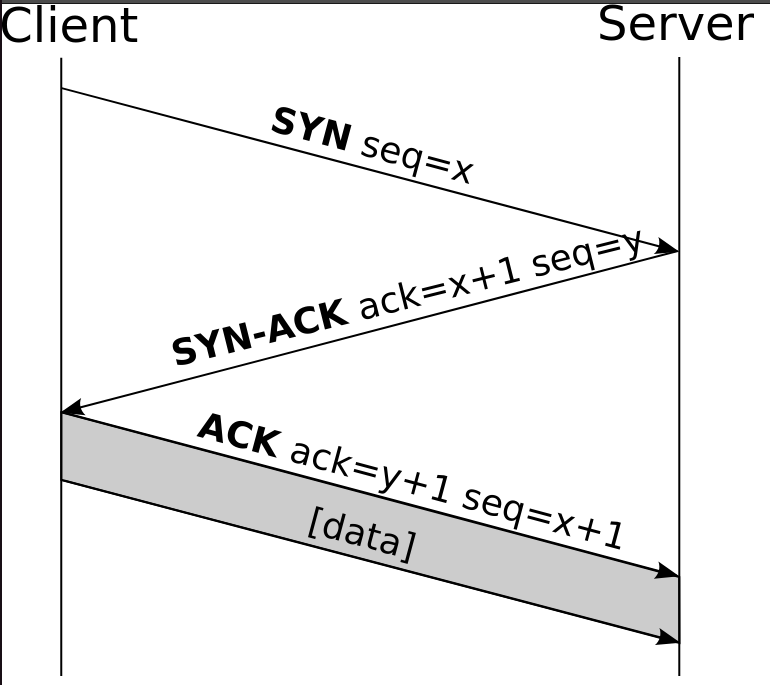😴 The Internet sleeps at night 🌙July 21, 2024
Does it ever feel like the internet is slower at night?
Did you, like me, assume that the time of day should have nothing to do with internet speed?
Today, we will look into the following graph, showing increased average and median latency during night-time for a large website as experienced by users in South America. By understanding Content Delivery Networks (CDNs), TCP, and stateful HTTP connections better, we will demonstrate why a large portion of websites is indeed slightly slower at night.

PoP-to-origin latency
The website in question is hosted in AWS us-east-1 (in North Virginia, US) and uses a CDN, in this case Fastly. The behavior has only been observed using Fastly, but is likely present with other CDNs as well.
The metric shown in this graph is what I call “PoP-to-origin latency”, which is the duration of the request as measured by the CDN Point-of-Presence (PoP), minus the duration as measured by the load balancer at the origin that received the request.

Fastly operates multiple PoP in South America, and we would expect different PoP-to-origin latencies for each of them, in function of their relative distance to AWS us-east-1.

The PoP referred to as BOG is Bogota (Colombia), and usually experiences highest latency around 9-11AM on this graph, where time is in CET (Berlin time): that would actually be 2-4AM in Bogota, in the middle of the night.
So - in every single PoP in South America, we see PoP-to-origin latency degrade significantly as people go to sleep, and then get better as they wake up. Not something I expected!
Latency distribution
It becomes clearer when we look at the distribution of PoP-to-origin latency for a single PoP (here: BOG). Most requests have a latency between 80-120ms, with a smaller number of requests between 240-300ms, roughly three times as much.


Why are some requests significantly slower? This is due to the CDN performing an optimisation by keeping the TCP connections open to the origin (TCP Keep-Alive).
When the CDN performs a requests to a website, it has to open a TCP connection to it, and perform what is called a TCP “handshake”. This is somewhat time intensive, and therefore once a TCP connection is open, the CDN provider will keep it open for a little while, building a pool of open connections to the website.

The already-opened connections in that pool can be reused later by requests going to the same origin. Requests that benefit from an already established connection will avoid the delay incurred by initializing the TCP connection, resulting in faster response times.
The graphs showing the PoP-to-origin latency distribution therefore also illustrate the quality of the connection pooling provided by the CDN and indicate how many requests were able to reuse an already-opened connection.
The internet does sleep at night
Now, what happens during the night? Keeping connections open has a cost for the CDN provider. There is a finite number of open connections per PoP that it can maintain, and this is resource shared across all its customers.
During the night, your website is likely to receive fewer requests, resulting in fewer opportunities to keep those valuable connections open. As a result, opened connections are more likely to time out, and more connections will have to initiate a full TCP handshake.
In our example, for the same PoP and the same amount of time but during the night, we see fewer requests overall, but more requests needing to perform a full TCP handshake. This results in slower requests, on average.
CDN performance
CDN performance depends on many factors. The distance between a user and the closest Point-of-Presence and the ability of the CDN to cache as many files as possible are the most well-known.
The quality of connection pooling between your CDN and your origin can also significantly impact your website’s performance. As we have seen, the amount of traffic to your website can influence how well that connection pooling performs.
During periods of low traffic, you may observe a noticeable increase in connection latency.
Your mileage may vary
I chose a particularly extreme example to illustrate what was happening, using one of the CDN PoPs with very little traffic. In most large PoPs, the number of requests remains quite high 24/7, so the differences between day and night are much less pronounced. However, I observe similar daily fluctuations globally.
The quality of the connection pooling is also likely very dependent on the CDN provider. Our example here uses Fastly, which overall does an excellent job of keeping connections open as much as possible. Results might be better or worse with different CDN providers. I would love to hear from you if you are able to reproduce this experiment!
< The curious case of the CDN Cache-HISS